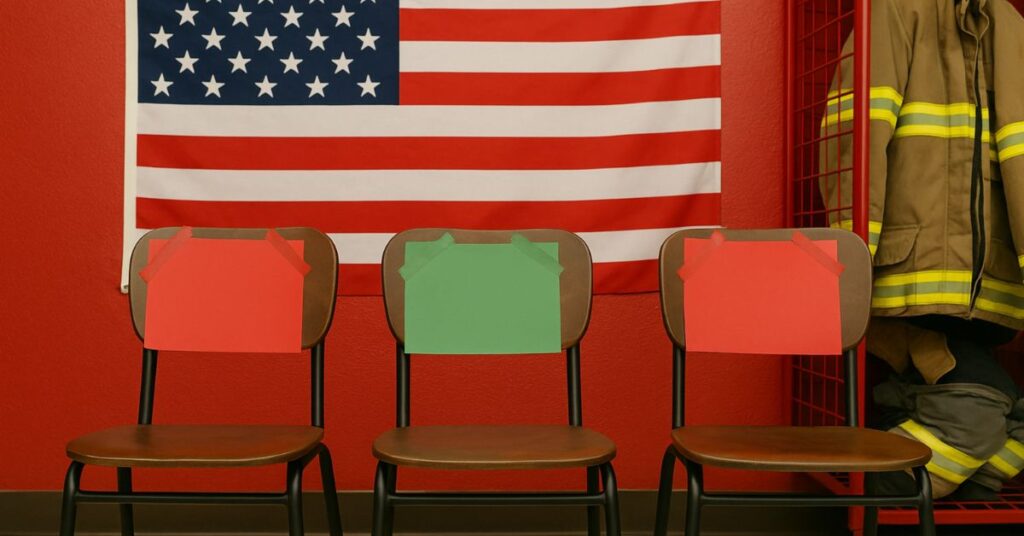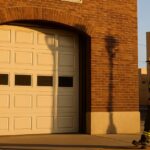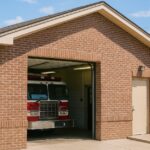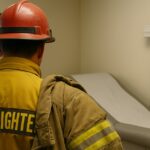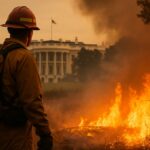During the Spring 2025 electoral season, emergency services funding emerged as a critical issue for municipalities nationwide. Communities, ranging from small rural areas to expanding suburban regions, faced different financial decisions that could sustain or enhance their local fire department operations. Today, we examine the outcomes of the various ballot initiatives presented across the country and analyze their potential impact on emergency response services nationwide.
Which Towns Voted to Enhance Public Safety?
Across the state of Wisconsin, residents of three rural communities have largely recognized the need for more adequately funded public services.
Marshfield, WI, increases its staffing
Marshfield residents demonstrated their commitment to public safety by approving a referendum that permits the city to exceed state-imposed levy limits by $256,903 annually. This measure will fund two full-time firefighter/paramedic positions, bringing the department back to its 2021 staffing levels.
With their vote, Marshfield citizens recognized an ongoing issue in their growing community: emergency call volumes have been steadily rising since the turn of the millennium. Between 2000 and 2024, the number of yearly calls increased from 2,390 to 3,543 incidents, representing a 48% jump.
For homeowners, the approved increase translates to approximately $13.28 per year for every $100,000 of property value. Although each household will contribute roughly $1.11 extra per month, the outcome will affect not only the city of Marshfield but also 13 surrounding municipalities, protecting a combined population of about 32,500 residents.
Whitewater, WI approves a comprehensive enhancement to public safety
Whitewater voters endorsed a property tax levy increase, totaling $1.3 million. This investment will fund the hiring of five additional police officers, two firefighter/EMTs, and one dispatcher, as well as necessary equipment.
The referendum passed with 53% voter support, reflecting community understanding of growing service demands. According to Police Chief Dan Meyer, the number of calls for service increased by 90% from 2010 to 2024, without any corresponding staffing increases. The approved measure represents a significant step toward restoring proactive, community-oriented policing while simultaneously strengthening fire and EMS capabilities.
This multi-faceted approach addresses both immediate staffing shortages and long-term public safety planning, positioning Whitewater to better serve its residents’ emergency response needs.
Racine, WI, votes to keep extra paramedics
With the support of 58.3% of voters, Racine successfully secured voter approval for a $1.5 million annual property tax levy increase. This funding will secure a permanent position for nine paramedics who were previously hired temporarily due to a federal SAFER grant.
The measure addressed a critical funding gap, as the SAFER grant was set to expire in spring 2026. Emergency call volume data proved compelling to voters, with 2024 requests reaching 12,514 times (a 50% increase since 2005) while staffing remained static. The approved levy increase will cost property owners approximately $31 per year for every $100,000 of assessed home value.
This referendum is a great example of proactive planning by city leadership and will maintain essential emergency services.
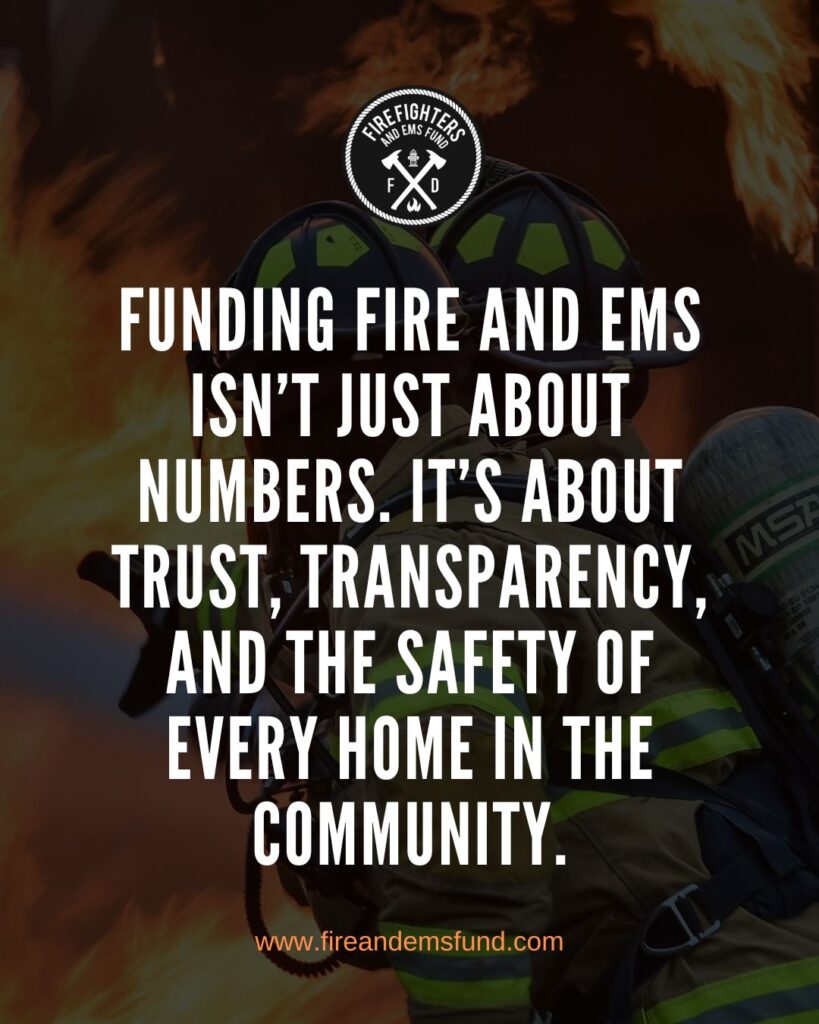
Referendums that Failed to Convince Voters
Unfortunately, the Spring election cycle also saw two significant setbacks for local emergency services in both Wisconsin and Illinois.
Vernon, WI, Fire Department saw its expenses called into question
The Village of Vernon referendum suffered a decisive defeat despite seeking to address legitimate staffing challenges within the fire department.
Voters overwhelmingly rejected the proposed $700,000 annual tax levy increase, which would have raised the village’s levy by 31.8% from $2.2 million to $2.9 million starting in 2026. The Vernon Fire Department, which serves 7,456 residents across 32.37 square miles, responded to 866 calls in 2024 with projections exceeding 1,000 for 2025.
However, residents appear unhappy with the Department’s transparency and administrative efficiency. Residents questioned the department’s structure, particularly the employment of four part-time chiefs who earned salaries for 25-hour workweeks.
The Village of Vernon Task Force, led by residents Bill Stock and Donald Anderson, argued that unclear financial reporting and questionable staffing decisions undermined public trust, ultimately contributing to the referendum’s failure.
Brookfield, WI, narrowly loses 9 firefighter positions
Brookfield’s ambitious $6 million levy increase proposal fell short, with 53.4% of voters rejecting the measure aimed at retaining nine firefighter positions and addressing a projected budget deficit.
City officials forecasted a $4 million budget shortfall for the following year, potentially growing to $7 million by 2029. Approximately 75% of Brookfield’s budget consists of employee salaries and benefits, making personnel cuts seemingly inevitable without additional revenue.
Mayor Steve Ponto had warned that referendum failure would force difficult decisions regarding staff reductions and service cuts. However, voters were reluctant to approve substantial tax increases during economically uncertain times. City officials now face the challenging task of identifying cost reductions while maintaining essential services, with Finance Director Robert Scott acknowledging that the impacts of these reductions remain to be determined through ongoing discussions with the Common Council.
Lincolnshire, IL rejects new facilities for their emergency response services
Meanwhile, in Lake County, voters near the Lincolnshire-Riverwoods area were posed a similar question: should their district issue $25 million in bonds to build a new fire station?
Unfortunately, just over 52% of voters rejected the measure. Perhaps fueled by concerns over the district’s growing bill, this reversal represents a major setback for Lincolnshire’s police service. The bonds would have allowed funding for the new station and its staffing, which could have lowered local response times by as much as 4 minutes.
The silver lining? The loss was narrow, and the mere presentation of this proposal shows a growing awareness of the importance of upgrading services in growing communities.
Colona, IL rejected a new public safety tax for the third time
In what was perhaps the only landslide defeat of this list, residents of Colona, IL rejected a tax increase that would have rescued the local Fire Department. The proposal would have costed, on average, $33 every year per $100,000 of property value, and would have allowed the local fire department to keep two part-time staff members.
What is perhaps more concerning is that public opinion against this “rescue tax” seems to be growing firmer in the local population. According to Fire Chief John Swann, Colona is one of the only districts in the area without a rescue tax – and yet, the tax lost by just 25 voted on its first consultation, but opposition grew to 125 voters, and has now peaked at 258.
For activists, this trend is worth taking notice, and is perhaps indicative of a closer look at the surrounding circumstances.
What Can We Learn from Voter Behavior?
The Spring 2025 referendum results reveal distinct patterns in voter decision-making regarding public safety funding. Research from the Wisconsin Policy Forum indicates that eight of fourteen municipal referendums failed, suggesting heightened voter scrutiny compared to previous years when approval rates were higher.
The most important success factor is a clear, data-backed explanation for why they are requesting more emergency response funding. Communities with successful referenda, such as Marshfield, Whitewater, and Racine, presented compelling statistics about rising call volumes, staffing deficits, and concerns regarding response times.
Furthermore, their budget presentations were transparent and directly linked tax increases to specific personnel and equipment needs. In this way, communities could see exactly where the extra money would be going and why it was needed. Finally, community engagement through informational sessions and accessible documentation helped build voter confidence.
On the other hand, electoral defeats stemmed from perceived administrative inefficiencies or questionable spending priorities. Economic uncertainty following recent inflation also influenced voter hesitation, as noted by Wisconsin Policy Forum researcher Ari Brown.
Where Firefighter and EMS Fund Stands
The Spring 2025 referendum outcomes demonstrate that securing public safety funding requires building genuine community partnerships. Transparency, accountability, and strategic communication emerge as essential elements for departments seeking sustainable funding solutions.
Moving forward, Fire Departments across the country will need to redouble their efforts to sustain community involvement. April’s mixed results underscore the importance of building lasting relationships with constituents and demonstrating clear value propositions for public safety investments.

